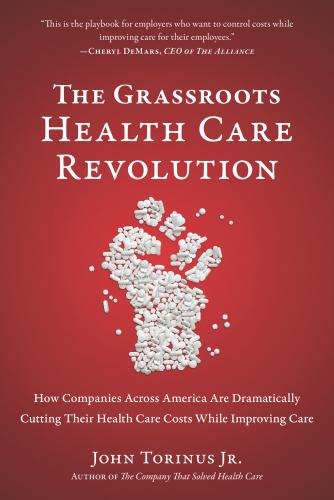Their second step has been to roll out consumer-driven plans that engage employees in becoming responsible users and buyers of medical services.
That, in turn, requires data sleuths, known as transparency and analytics vendors, who collect and slice and dice the medical charges and outcomes from many health care transactions to shine a light on prices and quality. They offer clear comparisons of costs and quality. It is a new lens that allows consumers to make sound decisions on where to get care.
The payers’ fourth step is to contract for rigorous on-site providers to manage health. Their health teams tackle chronic diseases, believed to cause 80 percent of health costs.
Chronic diseases [are] believed to cause 80 percent of health costs.
The sum of these kinds of structural changes in health care delivery constitutes a better model, a disruptive model. They spell real reform. And they create a virtuous linkage of improved workforce health and lower costs.
REFORM TAKES A VILLAGE
Bending the cost curve doesn’t come easy. It takes effective management. It requires culture change. It means difficult behavior change at the personal and organizational level. It entails business risks. But as innovative corporations are proving, it can be accomplished.
Major change doesn’t happen in a corporation without leadership from the C-suite, from the CEO on down through the management team. And it requires engaging the troops. It is simultaneously a top-down and bottom-up revolution. That sounds paradoxical, but it decidedly is not. The success of any major corporate initiative depends on that vital interaction.
Relying on human resource managers and benefit specialists to manage something as large and strategic as workforce health just doesn’t work. People who choose that profession tend to be caregivers, not change agents.
The reason the revolt is accelerating is that the top managers have come to two realizations: health costs could take their enterprises down and they can be managed. They have learned they can turn a negative to a positive.
Joel Quadracci, CEO of Quad/Graphics, the nation’s second-largest printer, said publicly, “Who would have thought that health care would become a competitive advantage for a printing company?”
Or, I might add, for many other companies?
The stakes are high.
For instance, one company (Robert W. Baird & Co., see box on following page) expects to cut at least 10 percent from its annual billion-dollar health care coverage bill via best practices. At seven times cash flow, that would mean an addition to that company’s enterprise value of $700 million.
BEST BUSINESS PRACTICES IN HEALTH CARE
We can learn from what these innovative companies are doing. This book will lay out the three-year playbook to move from a broken business model to best practices for health care delivery—to a reinvented, disruptive model. It will tell stories of private companies that are leading the way in proving that costs can be curbed, even flatlined.
They are not talking reform. They’re doing it. Their CEOs are leading the charge.
ONE COMPANY’S PRAGMATIC JOURNEY
Robert W. Baird & Co., an employee-owned financial services company, has taken a long, pragmatic road to better health care results.
CEO Paul Purcell made it a strategic issue a decade ago, starting with a wellness program at its Milwaukee headquarters in 2004. The self-insured company, which has 2,700 workers, offered $100 to each worker and another $100 to each worker’s spouse for undergoing an online health risk assessment about eating and lifestyle habits. It also offered biometric screening for cholesterol, blood pressure, and glucose levels.
“We were experiencing 15 percent to 20 percent increases in health costs at the time,” explained company benefits manager Lisa Mrozinski in an interview. “We had to get that under control.”
That initial effort to turn things around was underwhelming. “We had a 45 percent participation rate,” Mrozinski said. For many workers, $100 wasn’t enough to overcome their distrust of the company’s health insurance administrator, who oversaw the program. “We could have reassured them 100 times that HIPAA (federal privacy law) assured their privacy, but there was still that lack of trust.”
Конец ознакомительного фрагмента.
Текст предоставлен ООО «ЛитРес».
Прочитайте эту книгу целиком, купив полную легальную версию на ЛитРес.
Безопасно оплатить книгу можно банковской картой Visa, MasterCard, Maestro, со счета мобильного телефона, с платежного терминала, в салоне МТС или Связной, через PayPal, WebMoney, Яндекс.Деньги, QIWI Кошелек, бонусными картами или другим удобным Вам способом.
